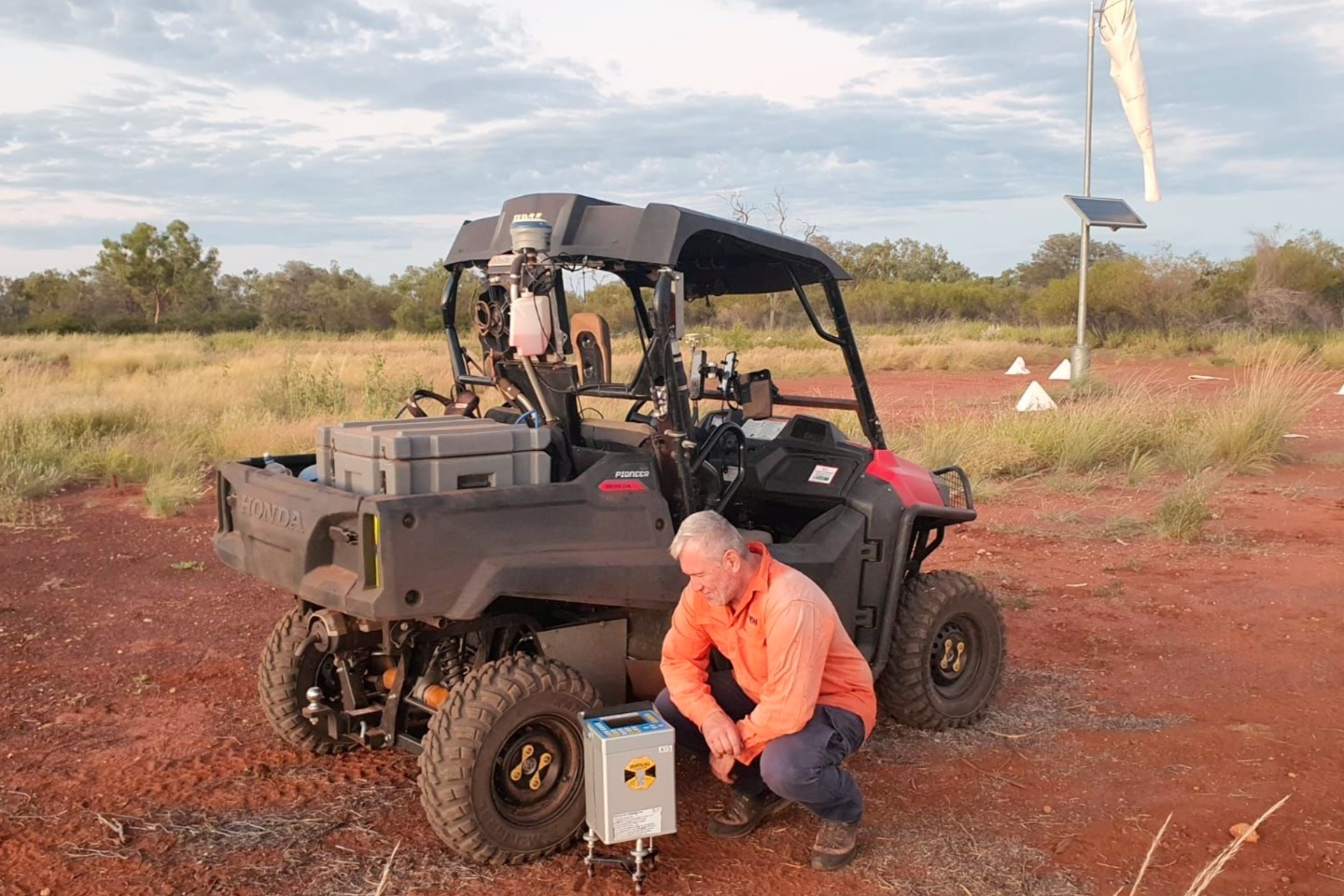Middle Island Resources has revealed a strong iron oxide-copper-gold-style alteration in its first diamond drill hole at Crosswinds in the Northern Territory East Tenant region. The hole was drilled to 808.4m and intersected increasing veining, brecciation and alteration at depth. The current exploration campaign is targeting previously uncovered aeromagnetic and induced polarisation geophysical anomalies beneath a trench sample of 130m at 0.75 per cent copper.

Middle Island Resources has revealed strong iron oxide-copper-gold, or “IOCG”-style alteration in its first diamond drill hole at Crosswinds at Barkley in the Northern Territory East Tennant region.. The hole was drilled to 808.4m and intersected sediments over altered granitic rocks with increasing veining and alteration at depth including chlorite, haematite, potassic feldspar, quartz and carbonate. The exploration campaign is targeting aeromagnetic and induced polarisation geophysical anomalies beneath a surface malachite occurrence with a 130m at 0.75 per cent copper trench sample from 2020.
At the time, spot pXRF readings between 24.8 per cent and 76 per cent copper were recorded at the Crosswinds prospect.
Middle Island interpret the surface copper mineralisation as the secondary migration of copper along faults from a possible deeper primary IOCG deposit. The induced polarisation chargeability anomaly is centred at 500m depth. The first drill hole remained straight and is believed to have pierced the target area.
Middle Island Executive Director, Brad Marwood said: “The commencement of drilling at the highly prospective Crosswinds prospect has been anticipated for a few months. The geological inspection of the core from surface provides invaluable insights to the IOCG system potential at Crosswinds.”
“The core demonstrates that multiple sequences of deformations occurred providing fracturing for deportment of mineralisation. The drilling continues seeking to define a IOCG deposit at Barkly Copper-Gold Super Project.”
The first part of the diamond drill core intersected younger Cambrian aged Georgina Basin limestones before passing into the older Proterozoic aged Alroy Formation biotite schists. Thick haematite alteration zones were observed in the formation and small quartz veins were prevalent throughout, some of which were brecciated and haematite altered.
From 500m downhole quartz veined granodiorite-granite intrusive rocks were intersected until the end of hole at 808.4m. The quartz veins showed discontinuous brecciation along with a matrix of carbonate and hematite.
Middle Island says IOCG deposits generally follow growth faults from fluid accumulation as deep as 5km. The company expected to see hematite, magnetite, disseminated sulphides grading to massive sulphides carrying economic metal content with depth. Middle Island believe the absence of sulphides may be due to intersecting the edge of the mineral deposition. Middle Island is placing a second diamond drill hole into the Crosswinds target. This second hole will be drilled in the opposite direction from the first to intersect the centre of the potential sulphide zone.
googletag.cmd.push(function() { googletag.display('bn-dfp-article-lb2-advert'); });Core from the first hole is being logged and processed at the company’s Tennant Creek operational base. Laboratory assays are expected to take at least another two months.
Middle Island Resources holds 5533 square kilometres of tenements in one of Australia’s most under-explored and prospective new terrains. Hitting IOCG alteration, veining and brecciation is a great first base for locating one of the potentially massive and high-grade copper-gold deposits. The use of geophysics over large areas to identify additional IOCG and sedimentary exhalative mineralisation means the company could have additional targets with a strong news flow.
Is your ASX-listed company doing something interesting? Contact: matt.birney@businessnews.com.au
















